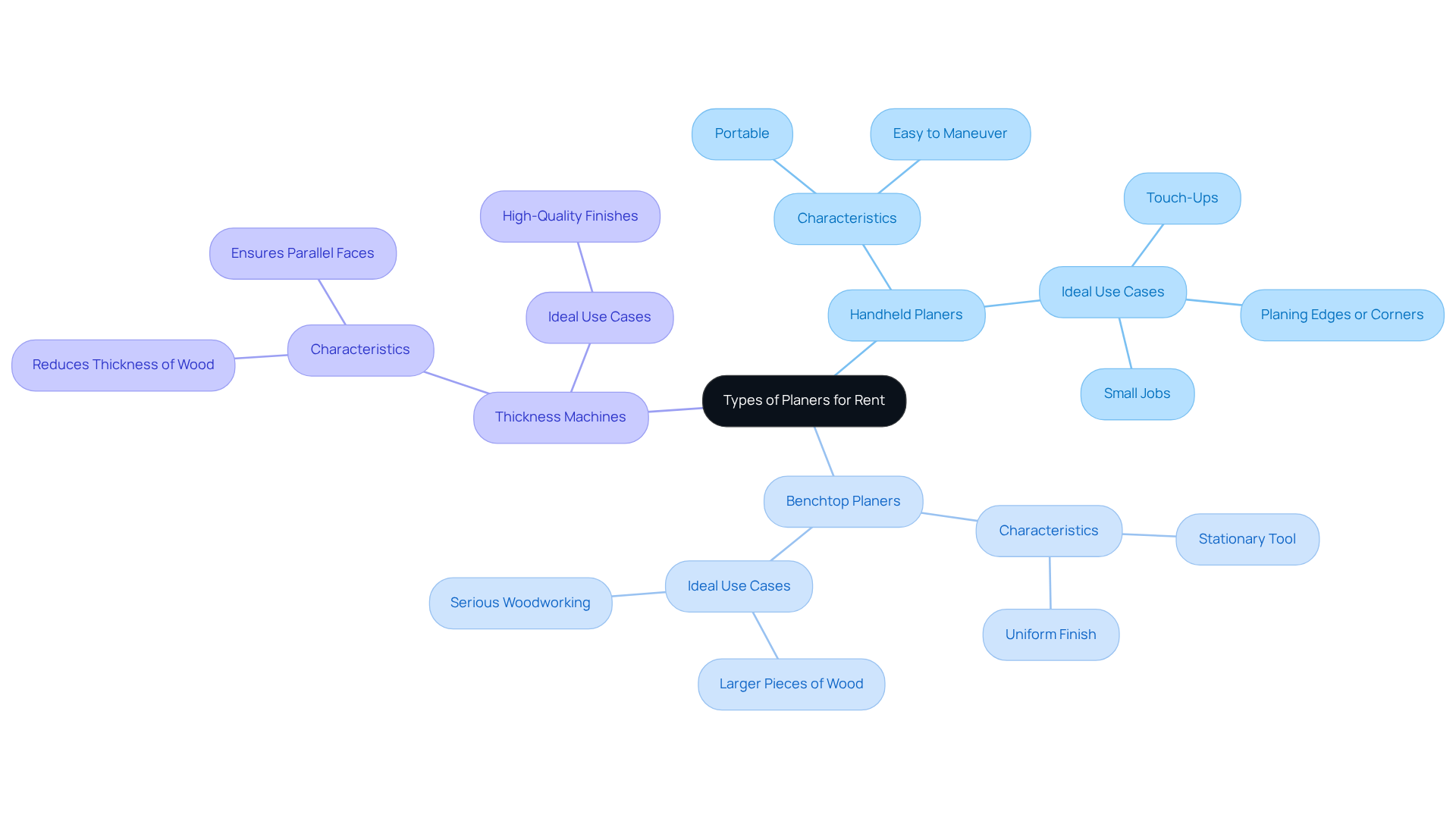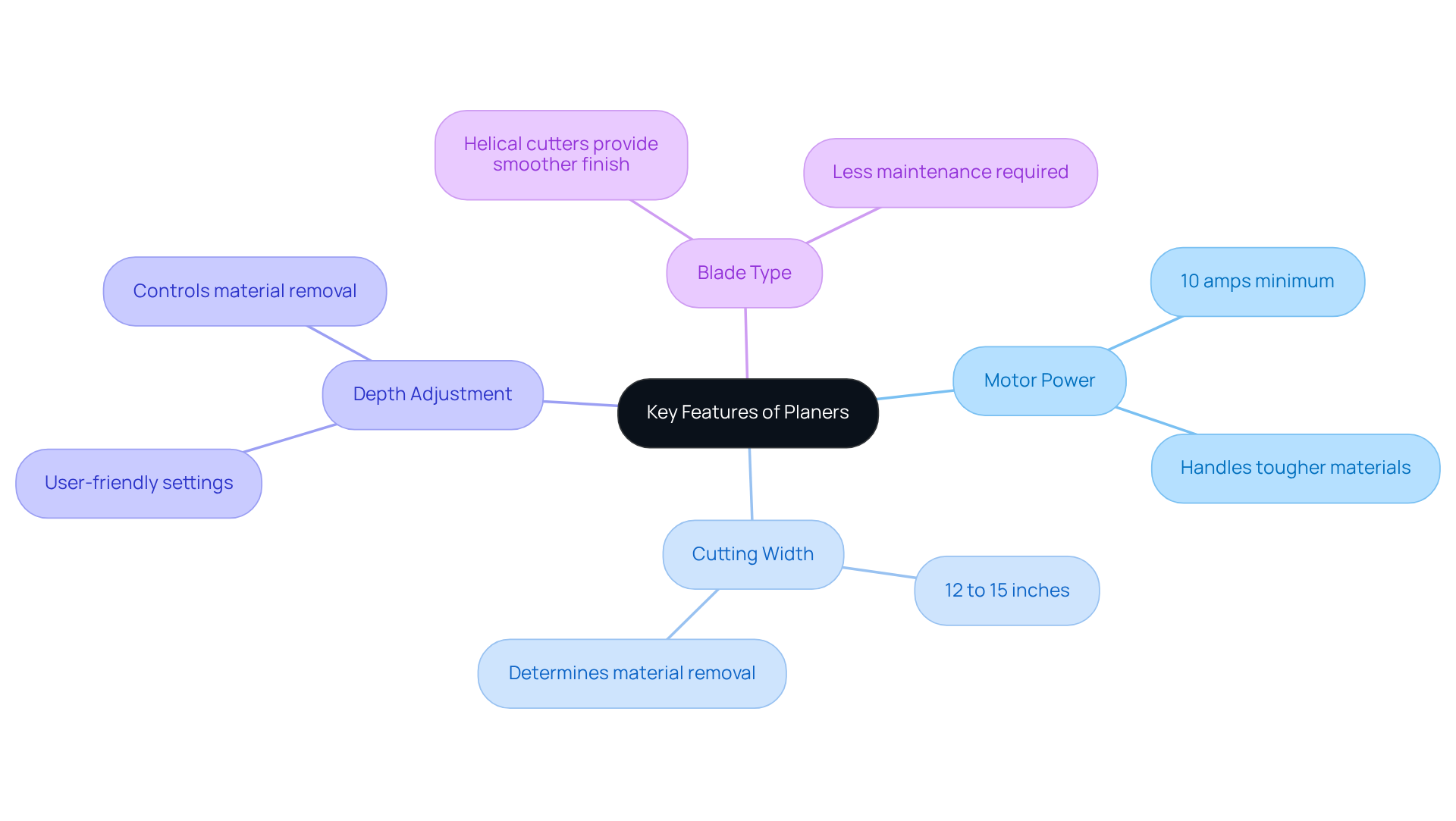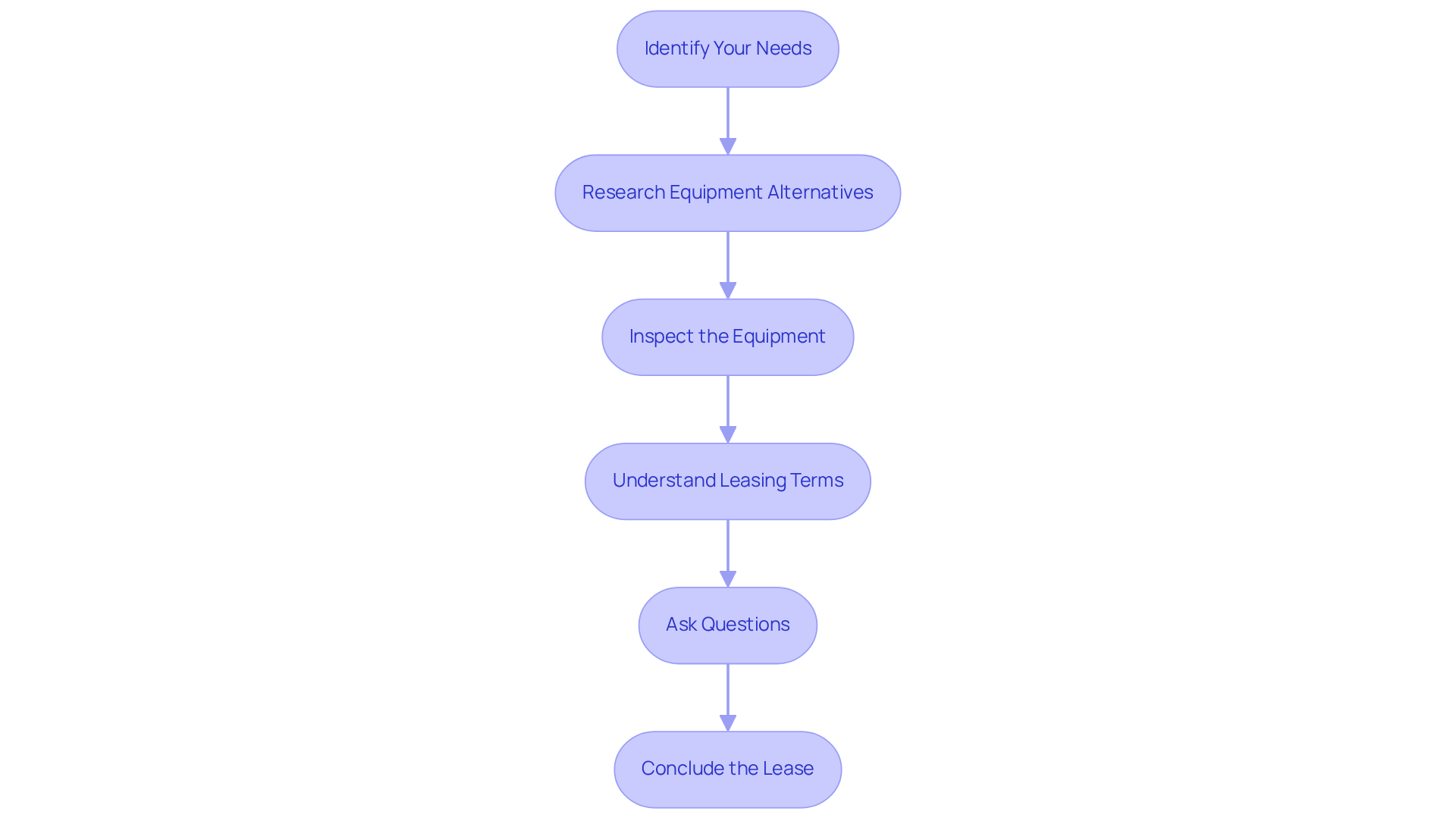Overview
Successfully renting planers for your construction project begins with a comprehensive understanding of the various types available, evaluating key features, and adhering to a structured rental process.
By identifying your project needs, you can effectively research equipment options that best suit your requirements.
Inspecting the tools is crucial; it ensures that you select reliable equipment that meets your standards.
Furthermore, grasping the leasing terms will empower you to navigate the rental process with confidence.
Ultimately, this approach guarantees a successful rental experience that enhances your project's efficiency.
Key Highlights:
- Handheld Planers are portable and suitable for small jobs, ideal for planing edges and corners.
- Benchtop Planers are stationary, designed for larger pieces of wood, providing a uniform finish for serious woodworking.
- Thickness Machines ensure both faces of wood are parallel, crucial for high-quality finishes.
- Key features to evaluate when renting a planer include motor power (aim for at least 10 amps), cutting width (standard widths are 12 to 15 inches), user-friendly depth adjustment, and blade type (helical cutters offer smoother finishes).
- Steps to rent a planer include identifying project needs, researching equipment options, inspecting the equipment for damage, understanding leasing terms, asking questions to the rental company, and finalising the lease.
Introduction
Navigating the world of construction projects presents a multitude of equipment choices, where renting the right tools can significantly impact outcomes. Among these tools, planers are essential for achieving precise finishes and enhancing the quality of woodworking tasks. This guide explores the critical steps for successfully renting planers, from understanding the various types available to evaluating key features that ensure optimal performance. With numerous options and specifications to consider, the question arises: how can one confidently select the ideal planer for their project?
Understand Different Types of Planers Available for Rent
When looking at planers for rent, it's essential to understand the different types available.
- Handheld Planers are portable and ideal for small jobs or touch-ups. They are easy to maneuver, making them perfect for planing edges or corners.
- Benchtop Planers, on the other hand, are stationary tools designed for larger pieces of wood, providing a more uniform finish that is appropriate for serious woodworking endeavors.
- Lastly, Thickness Machines are specifically designed to reduce the thickness of wood, ensuring that both faces are parallel, which is crucial for achieving high-quality finishes.
By determining the kind of device that best fits your project, including planers for rent, you can simplify the rental process and guarantee you have the appropriate tool for the task. Each type of planer offers unique advantages, allowing you to choose based on your specific needs and project requirements. This informed approach not only enhances the quality of your work but also ensures reliability in your experience with planers for rent. Take the first step in your woodworking journey by selecting the right planer today.

Evaluate Key Features and Specifications of Planers
When evaluating planers for rent, considering several key features is essential to ensure optimal performance and reliability.
- Motor Power is crucial; a more powerful motor can handle tougher materials and larger jobs effectively. Look for devices boasting at least 10 amps to guarantee robust performance.
- Cutting Width also plays a significant role, as the width of the device determines how much material can be removed in one pass. Standard widths typically range from 12 to 15 inches, allowing you to select the right tool for your specific needs.
- Depth Adjustment is another important feature. Ensure the device offers user-friendly depth adjustment settings, enabling you to control how much material is removed with each pass. This flexibility is vital for achieving the desired finish.
- Finally, consider the Blade Type. Different devices utilize various blade types, including straight knives and helical cutters. Helical cutters, in particular, tend to provide a smoother finish and require less maintenance, making them a popular choice among professionals.
By thoughtfully assessing these characteristics, you can confidently choose a tool that aligns perfectly with your requirements.

Follow Steps to Rent the Right Planer for Your Project
To successfully rent a planer for your construction project, follow these essential steps:
- Identify Your Needs: Begin by determining the type of wood and the specific tasks for which you need the planer. This critical assessment will guide your selection process effectively.
- Research Equipment Alternatives: Conduct thorough research on nearby equipment leasing businesses, such as [EZ Equipment Rental](https://blog.ezequipmentrental.com/7-reasons-to-choose-18-foot-step-ladder-rental-near-me), known for their expert advice and extensive range of well-maintained gear. Compare their offerings, prices, and leasing terms to identify the best fit for your project.
- Inspect the Equipment: Prior to finalizing your lease, meticulously examine the planer for any signs of wear or damage. Ensure that all components are functioning correctly, as EZ Equipment prioritizes quality and reliability in their tools.
- Understand Leasing Terms: Carefully read the leasing agreement, paying close attention to lease duration, fees, and any additional charges for late returns or damages. Being informed will prevent unexpected costs.
- Ask Questions: Do not hesitate to engage with the leasing company regarding the equipment’s operation, maintenance, and any necessary accessories. The team at EZ Equipment Leasing is committed to providing customer-centric service and can offer valuable insights to enhance your rental experience.
- Conclude the Lease: Once you are satisfied with your selection, complete the leasing paperwork and process the necessary payment. Ensure you receive a copy of the agreement for your records, solidifying your transaction.
By following these steps and leveraging the expertise of EZ Equipment Rental, you can ensure a successful rental experience and secure the right planers for rent for your project.

Conclusion
Selecting the right planer for a construction project is paramount for achieving high-quality finishes and ensuring efficiency. Understanding the various types of planers available for rent—handheld, benchtop, and thickness machines—forms the foundation for making an informed choice. Each type serves distinct purposes, making it essential to align the tool with the specific requirements of the job.
Key features such as motor power, cutting width, depth adjustment, and blade type significantly influence the performance of the planer. Evaluating these specifications not only aids in selecting the most suitable equipment but also elevates the overall quality of the work. Following a structured approach to renting, which includes:
- Assessing needs
- Researching options
- Inspecting equipment
- Understanding leasing terms
streamlines the process and minimizes potential issues.
Ultimately, the success of a construction project hinges on the careful selection and rental of the right tools. By applying the insights and steps outlined, individuals can confidently navigate the rental landscape and secure the ideal planer for their specific needs. Embracing these best practices not only optimizes project outcomes but also fosters a smoother, more efficient workflow, setting the stage for successful woodworking endeavors.
Frequently Asked Questions
What are the different types of planers available for rent?
The different types of planers available for rent include Handheld Planers, Benchtop Planers, and Thickness Machines.
What is a Handheld Planer and when should it be used?
A Handheld Planer is a portable tool ideal for small jobs or touch-ups. It is easy to maneuver, making it perfect for planing edges or corners.
What is a Benchtop Planer and what are its uses?
A Benchtop Planer is a stationary tool designed for larger pieces of wood. It provides a more uniform finish, making it suitable for serious woodworking endeavors.
What is the purpose of a Thickness Machine?
A Thickness Machine is specifically designed to reduce the thickness of wood, ensuring that both faces are parallel, which is crucial for achieving high-quality finishes.
How can I determine which type of planer is best for my project?
You can determine the best type of planer for your project by considering the specific needs and requirements of your task, which will help simplify the rental process and ensure you have the appropriate tool.




